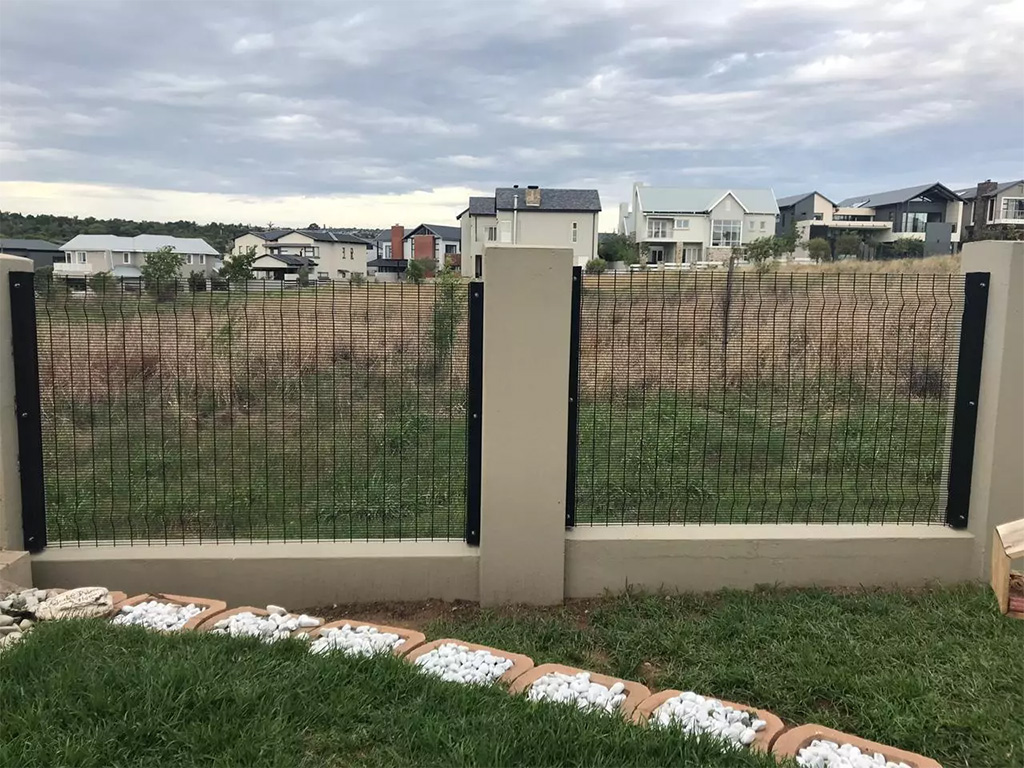Clearview Fencing vs. Traditional Fencing: Which is Right for You?

Clearview Fencing vs. Traditional Fencing: Which is Right for You?
Introduction
The selection of the right fencing for your property is more than just a functional decision; it’s a choice that can profoundly impact your security, privacy, and the overall aesthetics of your home or business. In the realm of fencing, two prominent contenders have emerged: Clearview Fencing and Traditional Fencing. Clearview, often referred to as modern or frameless fencing, presents a transparent and sleek alternative, while Traditional Fencing encompasses a diverse range of styles, from the classic wooden picket fence to robust chain-link options.
In this comprehensive guide, we will explore the contrasting realms of Clearview Fencing and Traditional Fencing, helping you navigate the intricacies of each option and ultimately make an informed choice that aligns with your unique needs and preferences. Whether you prioritise security, a modern aesthetic, or the timeless appeal of traditional styles, this article will provide the insights necessary to ensure your property is enclosed by the fence that suits you best.
Clearview Fencing
Clearview fencing stands as a modern and innovative choice for property enclosure, offering a unique combination of transparency and security. In this section, we will explore the definition, key characteristics, advantages, and limitations of Clearview Fencing.
Definition & Characteristics
Clearview security fencing is a specialised type of fencing designed to offer both security and visibility. It typically consists of steel construction with vertical bars and gaps between them, allowing for clear sightlines while providing a secure perimeter. These fences often include anti-climb features and are paired with secure gates. Powder coating is commonly applied for durability and aesthetics. Clearview security fencing is frequently chosen for commercial and industrial properties where the need for security and the ability to monitor the surroundings are equally important.
Clearview security fences can be finished in multiple ways to meet specific requirements. Some of the common finishes include:
- ZincAlume (Galvanised): This finish enhances the fence’s resistance to corrosion, making it a robust choice for outdoor applications.
- Plascoat (Anti-Corrosion): Plascoat finishes add an extra layer of anti-corrosion protection, ensuring the longevity of the fence, especially in coastal or industrial areas.
- Polyester Powder Coatings: Polyester powder coatings not only contribute to the fence’s durability but also provide a wide range of colour options. This allows property owners to customise the fence’s appearance, matching it to their aesthetic preferences or branding requirements.
These design variations in Clearview security fencing provide property owners with flexibility when choosing a fence that not only offers security and visibility but also aligns with their specific design and environmental needs. Whether you prioritise aesthetics, durability, or both, Clearview security fencing has options to suit your preferences.
Advantages of Clearview Fencing
Enhanced Security with Visibility
One of the standout features of Clearview fencing is its ability to provide enhanced security without compromising visibility. Unlike traditional opaque fences, Clearview fencing allows you to see both inside and outside the enclosed area clearly. This is particularly advantageous for homeowners who want to keep a watchful eye on their property or businesses looking to maintain a secure yet welcoming atmosphere.
Modern Aesthetics and Curb Appeal
Clearview fencing offers a sleek and modern aesthetic that can complement contemporary architectural styles. Its transparency adds a touch of sophistication to any property, enhancing its curb appeal. This unique design can transform your property’s appearance, making it an attractive choice for those who value aesthetics.
Durability and Resistance to Weather
Clearview fencing materials, such as tempered glass or high-quality acrylic, are chosen for their durability. They are resistant to weathering, corrosion, and degradation over time. This robustness ensures that your Clearview fence can withstand the elements and maintain its appearance for years to come.
Low Maintenance Requirements
Compared to some traditional fencing options, Clearview fencing boasts lower maintenance demands. Routine cleaning to keep the glass or acrylic panels clear and free of smudges or dirt is generally all that’s needed to maintain its aesthetic appeal.
Limitations of Clearview Fencing
Higher Initial Cost
Clearview fencing undeniably presents a higher initial cost, but this investment comes with compelling long-term advantages. The transparency and use of premium materials ensure exceptional durability and aesthetics, reducing the need for frequent replacements or maintenance. In essence, the upfront expenditure is a testament to the enduring value and modern appeal that Clearview fencing brings to your property.
Less Privacy
Clearview fencing intentionally prioritises transparency, which may reduce traditional privacy levels. However, this design choice significantly enhances security. Clear lines of sight both inside and outside the enclosure minimise hiding spots and deter potential intruders from entering your property unnoticed. This heightened visibility contributes to improved security, making Clearview fencing an excellent choice for those emphasising safety and vigilance over complete seclusion.
Traditional Fencing
While Clearview fencing offers a modern and transparent approach to property enclosure, traditional fencing has long been a trusted choice for defining property boundaries and enhancing security. In this section, we will delve into the characteristics, advantages, and limitations of Traditional Fencing.
Definition & Characteristics
Traditional fencing encompasses a diverse range of fencing types, each with its unique characteristics and applications. The choice of traditional fencing often depends on factors such as aesthetics, security needs, and budget considerations. Common types of traditional fencing include:
- Wood Fencing: Wood fences, often constructed from cedar, pine, or redwood, are known for their natural beauty and versatility in design. They can provide both privacy and a classic look to your property.
- Chain-Link Fencing: Chain-link fences are recognized for their affordability, durability, and low maintenance requirements. They offer security without obstructing the view.
- Vinyl Fencing: Vinyl fences are prized for their resistance to rot, weathering, and fading. They come in various styles, including privacy fences and decorative options, offering both durability and aesthetics.
- Wrought Iron Fencing: Wrought iron fences are known for their elegance and strength. They are often chosen for their ornate designs, making them suitable for both security and enhancing curb appeal.
- Picket Fencing: Picket fences are iconic for their charming appearance, often associated with a sense of Americana. They are typically used for decorative purposes and delineating property boundaries.
Advantages of Traditional Fencing
Privacy and Noise Reduction
Traditional fencing, especially wood and vinyl options, provides a high level of privacy. It effectively screens your property from prying eyes and reduces noise from the outside world, creating a peaceful environment.
Cost-Effectiveness
Many traditional fencing options, such as chain-link and vinyl, are more cost-effective choices. They offer some security without breaking the bank, but can easily be cut through, defeating the purpose of a high security fence.
Versatility in Design
Traditional fencing comes in a variety of styles and designs. This versatility allows property owners to choose a fence that aligns with their architectural preferences and landscaping choices.
Limitations of Traditional Fencing
Reduced Visibility
Unlike Clearview fencing, traditional fencing typically obstructs the view of both the inside and outside of the enclosed area. This can create a sense of seclusion but may not be suitable if you desire transparency.
Maintenance Requirement
Traditional fencing options, such as wood, often require regular maintenance. This includes painting, staining, or sealing to protect the material from weathering, rot, or insect damage.
Potential for Weather-Related Damage
Certain traditional fencing materials, like wood, are susceptible to weather-related damage over time. Exposure to rain, snow, and sunlight can lead to degradation, requiring periodic repairs and maintenance.
Factors to Consider
Choosing the right fencing for your property is a decision that requires careful consideration of several essential factors. Whether you’re leaning towards Clearview fencing or Traditional fencing, these considerations will help guide you towards the ideal choice.
Property and Security Needs
Assess your specific security requirements, taking into account factors like the local crime rate and the level of security your property needs. Clearview fencing offers excellent visibility, making it suitable for properties where security and vigilance are top priorities.
Aesthetic Preferences
Consider the aesthetic harmony between your chosen fence style and your home’s architectural design. Clearview fencing offers a modern and sleek appearance, suitable for contemporary homes, while Traditional fencing provides a wide range of styles to complement classic or rustic aesthetics.
Budget Constraints
Evaluate the upfront costs of fencing installation. Clearview fencing may come with a higher initial cost due to specialised materials and installation, while Traditional fencing options often provide a more budget-friendly alternative.
Maintenance Commitment
Reflect on the time and effort you’re willing to invest in fence maintenance. Clearview fencing typically requires less upkeep, primarily periodic cleaning. In contrast, Traditional fencing might demand more attention, including painting, staining, or repairs.
Local Regulations and Neighbourhood Considerations
Ensure that your chosen fence aligns with local zoning regulations and adheres to any homeowner association (HOA) restrictions. Different areas may have specific rules governing fence height, style, and placement.
Conclusion
The fence you choose is not just a physical boundary; it’s an integral part of your property that affects security, aesthetics, and even community dynamics. Selecting the right fence is an investment in your property’s future. It’s about creating a space that reflects your values and priorities, whether it’s embracing transparency and security or privacy and tradition.
To explore more about Clearview fencing and its benefits, visit our dedicated Clearview Fencing page for in-depth insights and resources.





